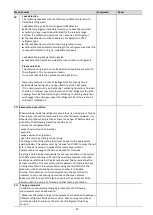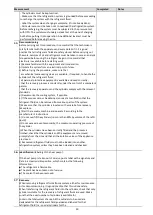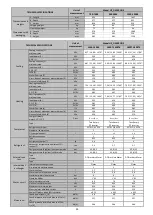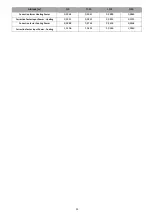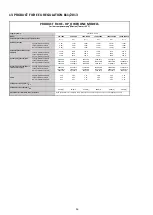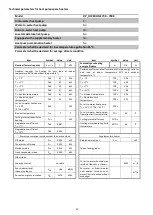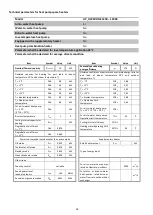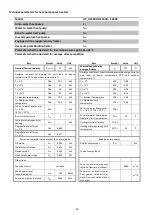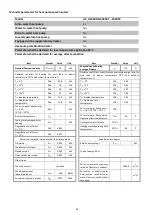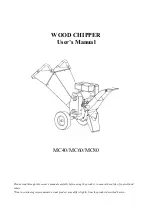
27
Measurement
Completed
Notes
4
Trigger Sources
■
Never use ignition sources, which could ignite the refrigerant, when
carrying out operations on the cooling circuit which contains, or contained,
flammable refrigerant.
Remove all possible sources of ignition, including cigarettes, from the area
where installation, repair, dismantling or disposal operations are being
carried out, which may lead to a leak of refrigerant.
■
Before starting work, check for flammable materials and ignition sources
in the immediate vicinity of the heat pump: Remove all flammable materials
and ignition sources.
■
Display the no-smoking signs.
5
Ventilate the work area
■
Carry out the repair work outdoors or provide adequate ventilation of
the work area, before working on the refrigerant circuit, or starting any
soldering or soldering / soldering operations.
■
It is necessary to maintain ventilation for the entire duration of the
operations. Ventilation must be able to thin out any gas leaks and,
preferably, disperse them into the atmosphere.
Measurement
Completed
Notes
6 Check the refrigeration system
■
Each spare electrical component must be suitable for use and comply
with the manufacturer's specifications. Replace defective components
only with original spare parts.
■
Perform all component replacement operations in accordance with the
guidelines. If necessary, consult Technical Support.
Carry out the following checks:
■
The refrigerant charge must not be higher than what is allowed for
the installation environment.
■
Check the functionality of the ventilation system. The ventilation
holes must not be blocked or blocked.
■
If a separate hydraulic system is used, check for the presence of
refrigerant on the secondary circuit.
■
Symbols and labels must always be clearly visible and legible. Replace
any illegible information panels.
■
The refrigerant lines, and related components, must be installed in
such a way that they do not come into contact with substances capable
of causing corrosion.
Unless the refrigerant lines are not made of corrosion-resistant
materials, or are safely protected against corrosion.
7
Checks on electrical components
■
Safety checks must be carried out for the maintenance and repair of
electrical components: See below.
■
In the event of a safety-related fault, do not connect the system
until said fault has been repaired.
If it is not possible to immediately repair the fault, provide a
temporary solution suitable for the operation of the system, if
necessary. Inform the operator of the system.
Perform the following security checks:
■
Discharge the condensers: Make sure that no sparks are generated
during the discharge operations.
■
When filling or extracting the refrigerant, or emptying the
refrigerant circuit, do not place any live electrical component or cable
in the immediate vicinity of the device.
■
Check the earth connection.
Summary of Contents for HP_OWER ONE 120R
Page 2: ......
Page 55: ...54 CHILLER MODE DOMESTIC HOT WATER MODE Cooling ...
Page 61: ...60 18 REGISTER OF OPERATIONS OF MAINTENANCE ...
Page 62: ...61 5 ...
Page 63: ......

















